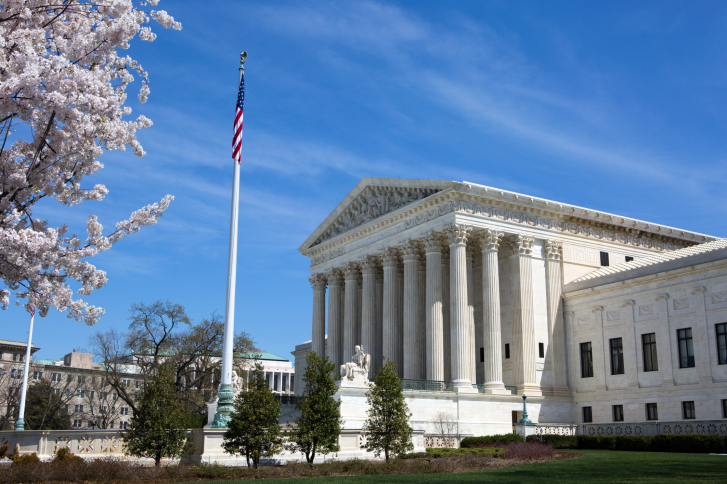I haven’t heard of “good sprawl,” and probably neither have you.
That’s because “sprawl” is one of those words it’s almost impossible to use dispassionately. The negative judgment comes built in, as with “pollution.” Of course, those who use the s-word are referring to some aspect of decentralized development they want government to discourage, if not stop altogether.
What aspect don’t they like? Well, that’s hard to figure out.
Is the problem “”uncontrolled” suburban development? As developers are the first to point out, their developments are carefully calculated–controlled, you might say–by what they think people will buy.
Is it “unplanned” suburban development, then? Many define “sprawl” as development where there is nothing to walk to except other houses, and planning is what dictated this separation of residences and businesses.
Perhaps the problem is the wrong kind of planning, and what we really need are “town centers” suburbanites can walk to, as the “new urbanist” architects want. Yet such a development on the edge of Chesterton, Indiana, has been condemned as “sprawl” by the Hoosier Environmental Council, that state’s leading environmental coalition.
Is the problem development that causes traffic congestion? Congestion stems from density–a lot of people in a little space. If that’s the problem, we should start deconstructing Chicago’s Loop too.
Perhaps sprawl is like hard-core pornography, which the late Supreme Court Justice Potter Steward said 35 years ago he wasn’t sure he could define, “but I know it when I see it.” That would explain why it’s so popular to be against sprawl these days. Everyone is seeing something different:
- The most recent newsletter of the activist Elmhurst (Illinois)-based Citizen Advocacy Center proclaims its opposition to sprawl, as well as its opposition to charging tolls on the state’s toll roads. Yet it is anti-sprawl gospel that easier transportation encourages people to live farther out.
- In the same vein, a Chicago transportation official and a public-radio talk show host recently expressed their joint amazement that Metra had been denied federal funding to add a second track to its North Central commuter rail line that runs from the Loop north to Antioch, near the Wisconsin state line. It was denied on grounds that more trains would contribute to sprawl. The radio people thought Metra would persevere and overcome this bureaucratic objection because, they averred, rail transit is supposed to combat “sprawl.” Yet it is anti-sprawl gospel that easier transportation encourages people to live farther out.
- Voters in suburban Lake, Kane, Will counties approved referenda in April to buy and preserve open space and natural lands. A total of 173 similar referenda passed in the November 1998 elections nationwide. These are said to be blows against sprawl, and in some sense perhaps they are, because in the past suburbanites have preferred their open space in the form of private yards rather than parks. But decentralized development can survive new nature preserves just as it survived the creation of the Cook County Forest Preserves–it just flows around them. These votes will relocate sprawl and push it farther out, not stop it. In all likelihood, development in these countries will be more spread out because of the green ways in between.
- In the northwest Indiana county where I live, a grassroots farmland-preservation group is beating the drums against a proposed rural development of factory-built modular homes on 50-by-100-foot lots. But so far no one has spoken out against nearby subdivisions of larger homes built on that site, which take up far more former farmland per person. Is “sprawl” inversely proportional to the incomes of its residents?
These examples suggest that the anti-sprawl movement is half mass confusion and half mass exclusion. A dab of history suggests why.
Sprawl Begins as Class Bias
There was no anti-sprawl movement back when ordinary working people couldn’t afford detached single-family houses with yards. In 1902, the great socialist Eugene Debs proclaimed Chicago was too crowded. “Regeneration will only come with depopulation,” he wrote in the Chicago Socialist, “when Socialism has relieved the congestion and released the people and they spread out over the country and live close to the grass.” That was the common view of progressive-era urban reformers who saw firsthand how oppressive it was to be crowded into tenements.
The anti-sprawl movement got going only when Debs’ vision (minus the socialism) began to be realized, and working class people started living in places like Levittown and Bolingbrook, places that didn’t measure up to upper-middle-class good taste.
“Whilst the suburb served only a favored minority it neither spoiled the countryside nor threatened the city,” wrote Lewis Mumford in 1961. “But now that the drift to the outer ring has become a mass movement, it tends to destroy the value of both environments without producing anything but a dreary substitute, devoid of form.”
Environmental Arguments Take Over
Most suburbanites believe their well-kept homes and lawns do possess a definite form. As a result, less obviously class-biased arguments have since become more popular. Sprawl is alleged to be inefficient or environmentally damaging. But planners and economists are still vigorously debating the efficiency issue, and the air has been getting steadily cleaner (thanks to federal environmental regulations) even as sprawl and driving increase. According to the federal Transportation Statics Annual Report 1996, Chicago-area emissions of traffic-related pollutants all declined from 1985 to 1994.
So is anti-sprawl snobbery any different today from when Mumford wrote, or has it just been dressed up in politically correct clothing? That would certainly explain the conspicuous failure of the anti-sprawl movement to define what it’s against. It would also explain why 40 years and more of anti-sprawl agitation has accomplished so little. Whatever we may say in public, when we plan our own lives, most of us agree with Debs.
In an era when everyone feeds off the government table, it would be astonishing had this majority not written some freebies for themselves into the law. It was the desire to “live close to the grass” that spawned the home mortgage deduction and commuter expressways, not the other way around.
Anti-sprawl activists repeatedly assert that if sprawl subsidies were abolished, sprawl would be too, but wishing will not make it so. Subsidies don’t make people do things, they make it easier for them to do what they wanted to anyhow. If this is true, then we can expect the current anti-sprawl flurry to generate sound, fury, and ballot measures to make the suburbs even nicer–but no multitudes flocking back to live careless in densely packed urban apartments and row houses.
Donnella Meadows, who co-authored the alarmist Limits to Growth in 1972 and its unrepentantly alarmist 1992 sequel Beyond the Limits, is an enthusiastic anti-sprawler. (Unlike some, she wants to stop all growth, not just manage it better.) In the March 11 edition of her column ” The Global Citizen,” she wrote, “There are some illegal reasons for wanting to [draw strict no-growth boundary lines around a city]: to protect special privilege; to keep out particular kinds of persons; to take private property for public purpose without fair compensation.
“There are also legal reasons: to protect watersheds or aquifers or farmland or open space; to force growth into places where public services can be efficiently delivered; to slow growth to a rate at which the community can absorb it; to stop growth before land, water, or other resources fail.”
Meadows has been publicly waiting for resources to fail for more than a generation now, and that secular apocalypse still eludes her grasp. She must be frustrated, but I’m sure she would never advocate anything illegal. Her readers, on the other hand, may not be so scrupulous.
Fortunately, we can apply a simple test. A legitimate anti-sprawl movement will lobby for a state law doing away with exclusionary zoning. Such a measure would require all towns and cities–suburbs in particular–to zone a reasonable share of their land for apartment buildings or other high-density residential uses, preferably near train lines.
Such a measure would improve the prospects for higher-density development, mass transit, and affordable housing. It wouldn’t interfere with the housing market or force anyone to live where they don’t want to But it would make sure that today’s suburbanites don’t hide an exclusionary agenda behind anti-sprawl rhetoric, the way segregationists once hid behind talk about states’ rights.
Why should they get to pull up the drawbridge and keep all the grass to themselves?
Harold Henderson is a staff writer for the Chicago Reader. This article is reprinted with permission from the June 1999 edition of Illinois Issues.



